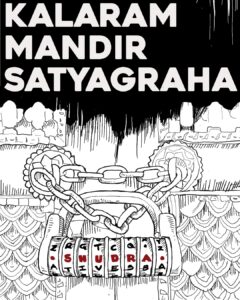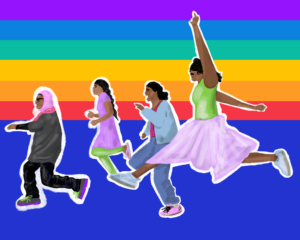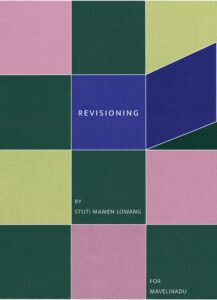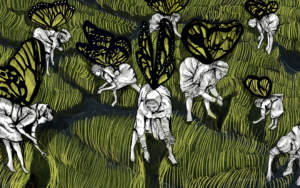In so many ways, the history of asuras and rakshasas is a history of marginalised castes and tribes, one that was grotesquely misrepresented by brahmins.

Illustration by Ajinkya Dekhane
Asuras, rakshasas and rakshasis find repeated mention in Hindu scriptures as ugly, villainous creatures that are the embodiment of evil. These scriptures have served as a tool for brahmins and other dominant castes to justify their colonisation and ascendancy across the subcontinent. Brahmins have all but erased the history of other peoples, vilifying and demonising all those who opposed them. The story of the asuras and rakshasas is one such example, where the truth has been buried by centuries of brahmanical propaganda.
So who were the asuras and rakshasas?
A number of researchers and anti-caste historians have written about how the perennial mythical battles between the Vedic gods and Asuras indicate a deep conflict in society at the time, and a robust local resistance to Brahmanism and Varnashrama Dharma. Communities who refused to conform to oppressive brahmanical structures were marginalised and dehumanised, relegated to “lower” castes, or to outside the varna system entirely. Remnants of this history lie in the folk memory of our communities, which celebrate asuras and rakshasas like Mahabali, Mahishasura, Ravana, Soorpanakha, along with a number of others.
“The rejection of the divine sanctity of the Vedas and, thus, the very basis of brahmanic hegemony reveals a deep resentment among the non-Aryans, Asuras, and Dasa-Dasyus who were being persecuted by the Aryan-brahmans under the cloak of religion. There are numerous examples in the Upanishads, Puranas and epics of defiant characters who contested Vedic ritualism and beliefs. The Chandogya Upanishad speaks maliciously of the Asura-views which were ranged against the brahmanical worldview.”
Braj Ranjan Mani, Debrahmanising History
Asuras were violently demonised and dehumanised by brahmins because they were likely also followers of the shramana tradition – the ascetic tradition that gave rise to religions like Buddhism and Jainism. The Puranas proliferated in the period between 400 and 1400 CE, and mark the period after the fall of shramanic religions in India, primarily Buddhism. They are instrumental to the land and power grab that occurred by dominant caste Hindus in this period. The Puranas are also filled with stories that celebrate the deaths and eviction of asuras from their lands. As Dr Kancha Ilaiah and other anti-caste writers have often noted, Hindu festivals do not celebrate harvests or other important occasions for the working class, but instead glorify the murders of asuras and brahmin influx into their lands.
“Ravana is called rakshasa or asura because he was a Sri Lankan Buddhist leader, like Mahabali in Kerala or Mahishasur in Vanga (Bengal) region. The hegemonic discourses of Brahmanism also animalized the conquered or coerced South Indian former Buddhists as apes and bears. Hanuman, Bali, Sugriva and Jambavan are examples of animalizing slur discourses against the South Indian warriors who resisted Varnashrama Dharma..”
Ajay S Sekher, Mahishasur: A people’s hero
In BAWS Vol 7, Dr. Ambedkar illustrates that the asuras, rakshasas, nagas, dravidas and dasyus were all of the same stock, and spoke the same or similar language. He believed that asuras and rakshasas were ordinary human beings, whom the brahmins transformed in their stories to monsters and animals.
In so many ways, the history of asuras and rakshasas is a history of marginalised castes and tribes, one that was grotesquely mutated and misrepresented by brahmins. We did not simply spring into existence as Hindu scriptures often describe, but rather, we have a long lineage of resistance to brahmanism that needs to be excavated, reclaimed and celebrated.
Sources:
Dr. Babasaheb Ambedkar, Writings and Speeches: Vol. 3 – B.R. Ambedkar
Dr. Babasaheb Ambedkar, Writings and Speeches: Vol. 4 – B.R. Ambedkar
Dr. Babasaheb Ambedkar, Writings and Speeches: Vol. 7 – B.R. Ambedkar
Debrahmanising History: Dominance and Resistance in Indian Society – Braj Ranjan Mani
Mahishasur: A People’s Hero – Pramod Ranjan (ed.)
Antigod’s Own Country: A short history of brahmanical colonisation of Kerala – A.V Saktidharan
Why I’m Not a Hindu – Kancha Ilaiah




